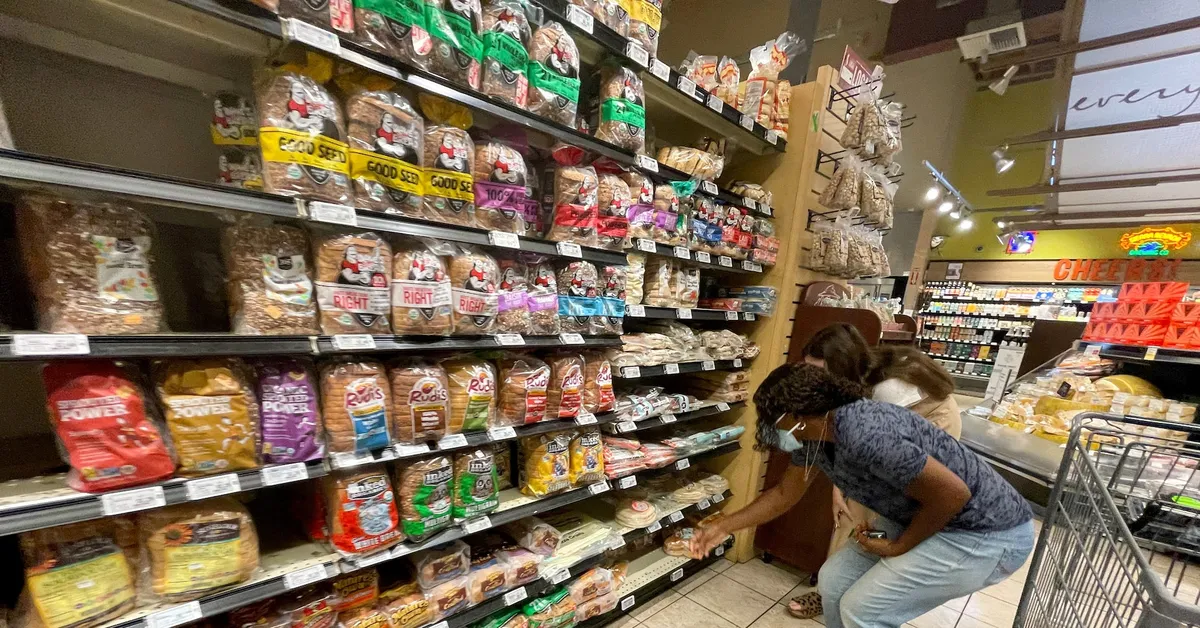
In February, U.S. consumer prices experienced a moderate increase, influenced by rising shelter costs that were somewhat offset by declining airline fares. This economic shift provides the Federal Reserve with the flexibility to maintain current interest rates during its upcoming meeting next week, while carefully observing the broader economic implications of ongoing trade tensions.
The relief signaled by the latest Consumer Price Index (CPI) report from the Labor Department could be short-lived. Notably, this data did not account for a wave of tariffs initiated by President Donald Trump’s administration, which have led to increased consumer inflation expectations and prompted economists to revise their inflation forecasts upward.
Recent stock market fluctuations reflect concerns over these trade tensions, which threaten the ongoing expansion of the U.S. economy. According to Chris Low, chief economist at FHN Financial, the anticipated trade wars are likely to drive prices higher in future inflation reports. While the Federal Reserve currently faces uncertainty regarding pricing, there are indications that they may have room to reduce rates later this year as the effects of the tariff disputes become clearer.
In February, the CPI rose by 0.2%, marking the smallest increase since October, following a 0.5% rise in January, as reported by the Bureau of Labor Statistics. Notably, a 0.3% increase in shelter costs, which encompasses hotel and motel room rates, represented nearly half of the overall CPI rise. These shelter prices had previously surged by 0.4% in January but were partially mitigated last month by a significant 4.0% drop in airline fares, indicating a potential decline in consumer and corporate spending.
Additionally, gasoline prices fell by 1.0% due to decreasing global demand for oil, while food prices saw a 0.2% rise, following a 0.4% increase in January. Interestingly, grocery prices remained stable, thanks to lower costs for fruits, vegetables, nonalcoholic beverages, and dairy products. However, egg prices soared by 10.4%, continuing a troubling upward trend driven by an avian flu outbreak that has led to significant culling of hens, resulting in acute shortages. Year-over-year, egg prices have skyrocketed by 58.8%, contributing to growing voter dissatisfaction with inflation.
For the twelve months leading up to February, the CPI registered an increase of 2.8%, down from 3.0% in January. Economists surveyed by Reuters had anticipated a 0.3% gain in the CPI and a 2.9% year-over-year increase. The CPI exhibited a 4.3% annualized increase over the three months preceding February, maintaining prices above the Federal Reserve's 2% target for inflation.
This month, President Trump escalated trade tensions by raising tariffs on Chinese goods to 20% and imposing a 25% duty on imports from Canada and Mexico. He also enacted enhanced tariffs on steel and aluminum, prompting immediate retaliation from European nations. As a result, the U.S. dollar strengthened against a basket of currencies, and U.S. Treasury yields experienced a slight uptick.
In response to fears of increasing prices, consumers likely rushed to purchase significant items, such as motor vehicles, in February. This surge in demand is expected to be reflected in upcoming economic data. According to Stephen Juneau, a U.S. economist with Bank of America Securities, consumer inflation expectations have risen sharply. If inflation remains above the Federal Reserve's target for an extended period, even due to temporary factors like tariffs, there is a heightened risk that inflation expectations could become unanchored, complicating efforts to restore price stability.
When excluding the often volatile food and energy components, the CPI rose 0.2% in February, down from a 0.4% increase in January. Over the last twelve months, the core CPI climbed 3.1%, the smallest increase since April 2021, following a 3.3% rise in the previous month. The core CPI increased at an annualized rate of 3.6% in the three months leading up to February.
Looking ahead, Goldman Sachs projects that the core Personal Consumption Expenditures Price Index, a key measure for the Federal Reserve's monetary policy, will rise from 2.65% in January to approximately 3% by December, a revision from earlier forecasts of mid-2% levels for the year.
The Federal Reserve is anticipated to maintain its benchmark overnight interest rate between 4.25% and 4.50% at the conclusion of its two-day policy meeting next week. Financial markets are predicting that the Fed may begin cutting rates in June due to the deteriorating economic conditions, after halting its easing cycle in January. Since September, the central bank has reduced the policy rate by 100 basis points, following a series of increases totaling 5.25 percentage points in 2022 and 2023, aimed at curbing inflation.